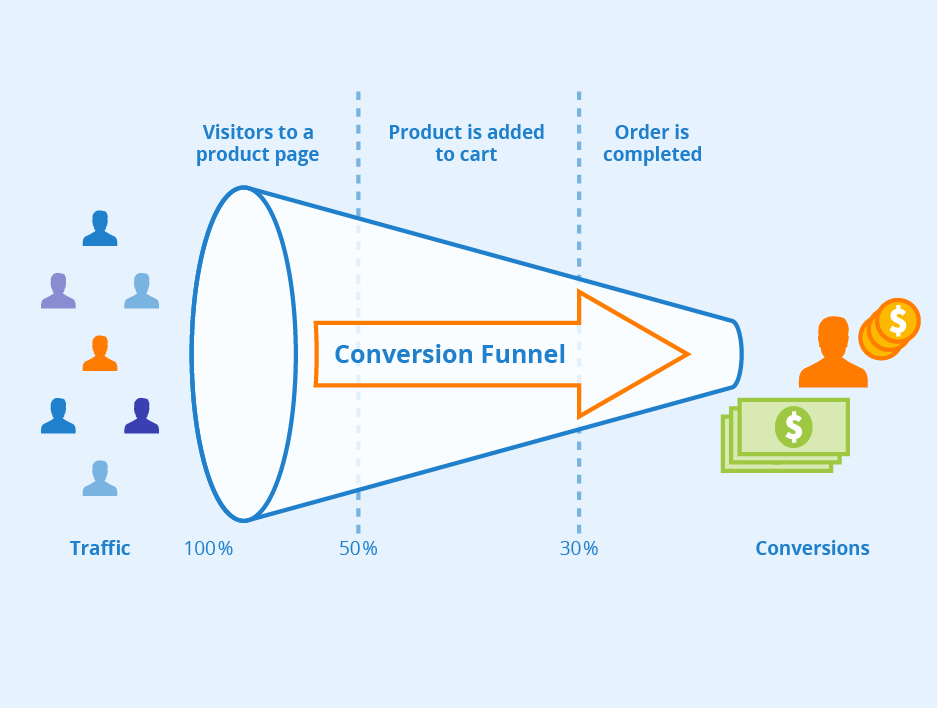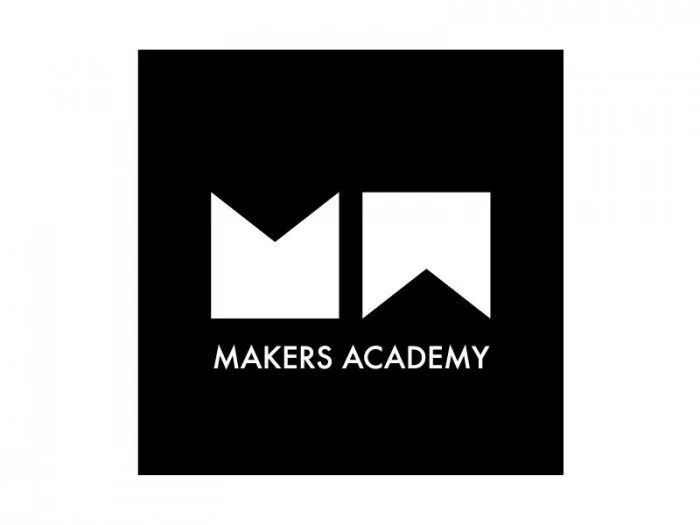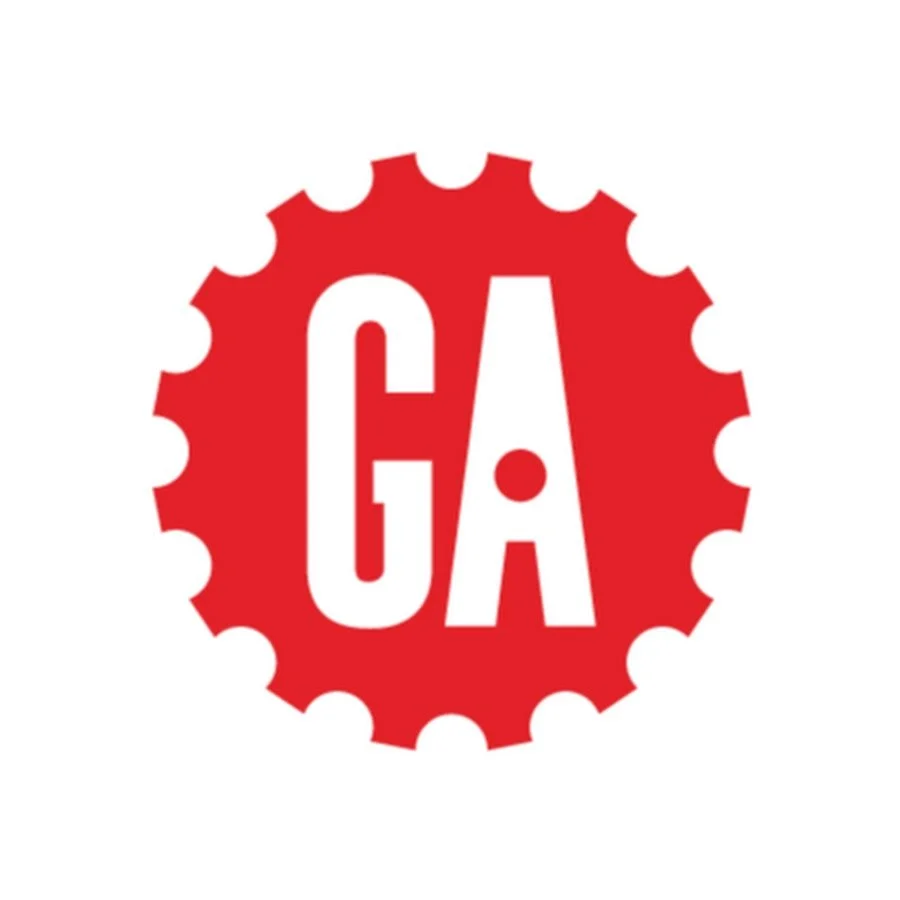Successful Blogging - Making Money from Your Blog
Please note: This post may contain affiliate links. See our disclosure to learn more.
Remote Jobs > Online Businesses > Successful Blogging > Making Money from Your Blog
Note: This section continues from Successful Blogging - Increasing Traffic to Your Website
The Free Nomad Guide is designed to help people become successful as a blogger, podcaster, YouTuber, influencer, or other type of digital nomad. In this section of the Free Nomad Guide, we focus our attention on making the path to becoming a successful blogger as easy as possible. We remove all of the mystery by providing a clear and logical step-by-step process that both increases engagement and maximizes your revenue much quicker than the average blogger. Congratulations on choosing this path and welcome to the blogging community!
Blogging Step 5: Making Money from Your Blog
Once you have traffic coming to your blog, you can start earning money from it in a few different ways. Primarily, you’ll want to set up a Sales Funnel to help you maximize your profits from the 4 main income sources:
Selling your own Products (like books or courses)
Partnering with Affiliates
Placing Advertisements on your blog
Working with Sponsors
Small blogs generally don’t earn much money - especially in the first year - but the ones who earn the most are the ones who are selling their own products or services; So, this would be a good place to start.
“A beginner blogger can usually make between $1,000 & $4,000 per month after the first year of starting their blog.” - Matthew Woodward
Small blogs can also make some income from affiliates if they are good at persuading their viewers to purchase amazing things. If you wish to make money in this area, you will need to focus on the way that customers make decisions about purchasing products. In marketing, this is called the “Sales Funnel,” which we will talk about more below.
However, income from ads and sponsors is typically quite low for small blogs because earnings on ads are based on the number of blog visits per month. Sponsors generally want your number of blog visits per month - and your social media followings - to be high as well, but new blogs typically have a low number of website visitors and a small amount of social media followers. So, for now, you might want to avoid ads and sponsors.
Focus on creating a product that your audience is already asking for. They might not have mentioned too much yet, but if you’ve had questions like “can you tell me more about this” or “how do I do that” then you’ll know that you are on the right track. Once you’ve decided on the product, you should create, market, and launch that product. Then focus your efforts on your sales funnel in order to maximize your profits.
Focusing Your Efforts by using The Funnel
While you could jump into one of the 4 main income sources discussed above, you likely won’t make much money at all without a sales funnel.
Most unsuccessful blogs only ever reach the very top of the sales funnel. The funnel exists even if you haven’t looked into it or if you’ve spent any time on it. It’s not simply an email thing - it’s your entire blogging business.
WHAT IS A FUNNEL?
It is the route that a customer takes to make a decision to purchase a product.
If you haven’t spent any time on your funnel, you may be pulling in tens or hundreds of thousands of visitors while only making a few sales. Almost all blog failures occur because a blogger didn’t realize how important the sales funnel was, and they simply tried to increase traffic to their website hoping that the increase in traffic to their site would equate to more sales. That is known as the “Top of the Funnel.”
When we started off this series, we showed a few examples of blog sites and how much money they make on a monthly basis. This is a good time to point out two in particular:
Our Small Hours – April 2016 Income Report– 92,929 monthly page-views – $1,844.03 monthly income.
Matthew Woodward – December 2017 Income Report - 137,513 monthly page-views - $28,429 monthly income.
These two blogs are receiving traffic that is relatively close, but the amount that they are earning is drastically different.
One is earning $0.0198 per visitor on average (around 2 cents per visitor)
The other is earning $0.2067 per visitor on average (around 21 cents per visitor)
A full 10.4 times as much money per visitor!
One has mastered the funnel while the other has not. Can you see the difference?
Funnels are the #1 way for any business - including blogs - to generate and convert prospects into customers on the internet.
The “Client Journey” is an outline of what happens from the first time a potential customer sees your advertisement to when they ultimately become a paying customer. Almost all small business owners have no idea how this works and rely primarily on luck to get new customers.
If a business owner ever wonders why their website isn’t bringing them new business… it’s most likely because they’re not using a funnel.
You should focus on all three of the main stages of the funnel because they are all separate and unique - each playing a different, but important, role in driving customers through to purchase.
The Client Journey Stages:
Attention Stage: The potential client becomes aware of the problem, but they are not sure where to go or what to do about it.
Engagement Stage: The potential client is looking for, and researching, additional information about the problem.
Conversion Stage: The potential client has decided to make a purchase and is looking for the best offer.
There are different advertising formats and content types that are most successful in each stage of the funnel - but it is vital to focus on the full-funnel and not just a single stage of it. Once you’ve designed a funnel, it will be easier to implement it going forward.
THE TOP OF THE FUNNEL
The top of the funnel is where everyone goes in (visiting your site). This is generally through advertising or through another method that we mentioned in Successful Blogging - Increasing Traffic to Your Website.
Once they’ve made it to your site, they’ve reached the “Top of the Funnel”. Only the most interested buyers will move further down your funnel.
Attention Stage:
Your objective in the Attention Stage is to create attention and awareness. You can do this by prioritizing content that is immediately consumable in whatever platform you choose. If it is an advertisement, make sure the image and the text work well together. This applies to ads on Google or Facebook, as well as free posts or shares on Facebook, Pinterest, and Instagram. A link can be included as a secondary focus within the content.
Additionally, make sure that your content is appropriate for the audience that you are marketing it to (i.e. don’t try to sell dog toys to the “cats only” group).
“Widening the Funnel” means trying to attract a larger number of potential clients at the Attention Stage, typically by advertising to new audiences, increasing their brand awareness, adding inbound marketing, etc. in order to drive more people to your site, thus “catching more potential clients” and “widening the funnel.” The more people there are who are coming into a funnel, the wider it is.
You should have a clear objective for each of your funnels. For example, “I am creating this advertisement so that they will visit my website and purchase this product or sign up for my email list.”
Using Facebook Lead Forms. Lead Forms are basically small funnels inside of Facebook. You can run advertisements and collect customer contact information all inside the Facebook platform. Additionally, the lead costs are cheap because you end up keeping people on Facebook and they appreciate it when you help keep people on Facebook.
THE MIDDLE OF THE FUNNEL
When your potential client has arrived at your website, you’ll want them to first see what is known as a “Landing Page.” This page should have a message that is both consistent with the advertisement or content that led them there, be informative, and targeted to lead them to do some toward some end goal.
Engagement Stage:
Your objective in the Engagement Stage is to be informative and product-focused. All image and video-based units should link to other pages on your site to allow for further research. To encourage traffic, you should utilize calls to action (i.e. “Check out our Review of [that Product]”). Depending on the goals of your brand, your objective will likely be to generate additional traffic or page views in this stage.
However, you should also compare and point out selling points, of your own product against those of competitors - in this stage as well. Those competitors could also be affiliates (think of it like selling a store brand product next to a brand name product at department stores like Target).
For an example of how this works, imagine that you’ve just clicked on an advertisement with this message: “Singapore: The Most Developed, Westernized, English-Speaking Country in Southeast Asia.” The page that you land on is designed as an Engagement Stage landing page.
THE BOTTOM OF THE FUNNEL
This is where you convert your potential clients into clients. Conversion does not always mean that a sale needs to be made, however you do need to make sure that your call-to-action is clear.
Conversion Stage:
Your objective in the Conversion Stage is to get your visitor to take certain actions. You may need to test price-points or promotion wording. Definitely include the key benefits of the product NOT the key features of the product, and use strong calls-to-action to convert. Conversion ads have the most impact when there is custom messaging for new vs. returning customers. You can do this by assuming that customers on your main landing page will be new customers, while those on your email lists are likely returning customers.
“You undoubtedly want visitors on your website to take certain actions. Maybe you want them to make a purchase, sign up, or fill out a form. When someone does something you want them to do, it’s known as a conversion. The visitor converts from browsing to taking the action you want them to take.” - Neil Patel
Here is a list of different Conversion Objectives:
Course
Webinar
Case Study
Audit
Trial
Demo
Email Opt-in
PDF Download
Strategy Call
Phone Call
Registration
Toolkit
Video
If you are using an Email Op-In form, make sure that it contains only required fields (no optional fields).
Additionally, you want to consider what might happen if a visitor does not want to follow your conversion objective. In this case, you should always have a “re-target” set up for prospects who do not convert. In other words, lead them to a different page for more information.
Lastly, have an automated response set up, or a redirect to a “Thank You” page, when someone does convert.
Having an Email List
Anyone can create an “affiliate funnel machine” by using the funnel process to build up an email list. You can then run email campaigns that are designed as “conversion pages” directed to specific groups of followers. For example, if you know that someone signed up to your email list to receive more information about Singapore, you can send them specific Singapore tour packages, flight deals to Singapore, or guide book recommendations through that email list. Many bloggers use their funnels to automate sales through email lists in exactly this way.
The 4 Sources of Blog Income
1. Selling your own Products or Services
Our recommendation is to start with a series of blogs that will cover one topic over a period of time. The goal for these articles is to build a comprehensive “guide” at the end that covers “Everything you need to know about [something].” This way, your blogs will automatically be building content for a product AND at the same time they’ll be building your blog’s Domain Authority which is amazing for getting ranked higher on search engines later on.
Start by brainstorming a few topics that you know a lot about and which can help provide additional value to your readers. Don’t assume that everyone knows as much as you do about these topics - chances are that they don’t. You really are an expert on at least a few things! Then, start putting together 1,400 -2,400 word blog articles of each piece of this topic. Once you are finished, you can keep all of the blog articles, but then you can also re-package them by turning them into a book or a video course (your first product).
Start by asking yourself these three questions:
Are people asking you for advice on anything in particular?
What is one topic that you feel like an expert on and could easily share your experience?
Which blog or social media posts receive the most comments or interaction?
We wrote a lot more about this topic in “Researching Effective Content.” Read it over because this is the most effective way to earn money as a new blogger!
Additionally, you can start considering affiliates that work well with your blog series and potentially signing up with them and sharing complementary / helpful products, services, etc. in those posts. Once you’ve completed your first series, book, and added the affiliates, consider starting a second series.
One more thing – once your social media presence and blog readership increases to over 10,000 viewers per month, we would recommend adding ads to your website and accepting sponsors.
Using Your Blog as a Platform
Your blog can also be used as a gateway to other things that you offer. For example, offering a freelancing service or a separate non-related product – or both! – can make your blog even more unique and special. These services or products do not have to be in the same subject category as your blog either – but do try to tie them in by using a story to connect them to your blog.
As you begin to understand what your readers want you will be able to craft specific products or services specifically for them. If you are interested in learning more about offering freelancing or consulting services on your website, check out that section on this page.
2. Affiliate Income
Companies need people to advertise their products for them. An affiliate would be a person – or another company such as your blog – that are in the same industry as them and can promote those products (i.e. We might say “When we travel, we almost always use Airbnb”). If you are affiliated with a company, they could provide you with a traceable link to put on your blog so that people can click on it to view the product, and if they make a purchase – you will earn a percentage of the profits from that sale!
Some people say to wait until you have enough traffic before you start putting affiliate links on your site. This is your choice, but it is mostly irrelevant. It might slow traffic growth a little, but it may provide the much needed income if you cannot wait very long. Plus, doing it early allows you to avoid having to go back and add the links into all of your blog posts later on – a very tedious task!
Sign up for these affiliate programs!
Skimlinks: OUR RECOMMENDATION - This is the easiest one to sign up for. You receive a line of code to install on your website and are given easy to follow instructions to put that code where it needs to be. Next, SkimLinks will automatically change all of the links on your site into affiliate links (if they have affiliate programs and even if you haven't joined them). They get a small cut, but it allows you to earn money from any program that you haven’t been approved for yet and is much easier than applying for approval at every place individually!
Amazon Affiliates: This one is fairly easy to sign up for and allows you to link to anything that is listed on amazon.com and earn money from your referral on it. Your readers don't have to buy the EXACT item you link to from Amazon. Actually, if they buy anything on amazon.com over the next 24 hours you’ll get paid for that too! You will need to make 3 sales within 180 days or your account will be de-activated, but you can simply apply again for a new account if this happens.
Put this disclaimer on every page of your blog (ours is in our footer): “We are a participant in the Amazon Services LLC Associates Program, an affiliate advertising program designed to provide a means for us to earn fees by linking to Amazon.com and affiliated sites.” THIS IS VERY IMPORTANT - Amazon will de-activate your account if you don't have this disclosure visible on every page of your blog.
Once you're approved, go to your most popular blog post and find a place to stick an organic link to a product on Amazon. Do you mention an item that you could find on Amazon? Can you add a "what to pack" section? Find a way to work it into your blog post, and put the affiliate link directly in your text. Go back through ALL of your most popular posts and throw in some Amazon links!
AWIN: This is the most recommended affiliate program out there because it has most of the top brands. We recommend using AWIN for the brands that simply don’t show up on Skimlinks.
ShareaSale: This one is actually a part of AWIN, but with a few other great companies that don’t fit their main program. Again to keep it easy, only use the affiliates with ShareaSale that Skimlinks doesn’t offer.
CJ Affiliates: This site has a massive selection of affiliate brands for just about any industry or blog, so you will also find a number of affiliates here that will fit any brand/business - including yours. So, look through them and then check Skimlinks to see if they are available there - if not, sign up for CJ Affiliates if you want to add them to your list.
Rakuten LinkShare: When “The industry voted [them] the #1 Affiliate Marketing Network for eight straight years,” it makes for a program that is definitely worth joining!
NOTE: You might start earning money from your affiliate links early on, but generally the income won’t begin to pick up until you have a good amount of blog traffic and a solid amount of quality content. To make money from affiliate links, your readers have to be ready to make a purchase. Ideally, they will have already decided to buy something, and the only question is which one they're going to buy. Your site should help them decide which *thing* to purchase. The closer you capture your audience at the end of the buying cycle - IE, the moment when they whip out their credit card and make a purchase online - the more affiliate income you will be earning.
Step 1 in your adventure of earning passive income from a blog is now complete!
3. Influencer Networks & Sponsored Posts
Reaching out to businesses and agencies by yourself, also known as “cold pitching,” could require an abundant amount of time and research - similar to applying to jobs directly with companies. This generally works better when applying for specialty or advanced jobs, and it works much the same way when blogging.
However, “Influencer Networks” (similar to job boards like monster.com) are a much easier way to find and land sponsors in the blogging world - especially when your blog isn’t yet pulling in 100,000+ viewing sessions per month. Applying for campaigns through an influencer network is as easy as filling out a form. No anxiety-inducing pitch necessary!
Influencer networks act as a go-between for brands and bloggers. Brands who want to promote a campaign using content creators hire an influencer network to find the influencers/bloggers for their campaign. The network does most of the legwork for you. There’s typically a marketplace where you can sort through campaigns to find ones you want to apply for, so all you have to do is log in and browse active campaigns.
They are a fantastic way to monetize your blog, get paid to write and create content, and build up a portfolio of sponsored work for when you DO start cold pitching later on.
We recommend joining influencer networks even if you're new to blogging. Every campaign looks for something different - so it is possible that your audience will be exactly what a brand is looking for!
Sign up for these 5 influencer networks:
IZEA: The largest social media influencer marketplace that allows you to monetize your content, creativity, and influence. Here you can partner with industry-leading food, fashion, beauty, and lifestyle brands.
Cooperatize: Create a “news feed” like account that filters sponsored content opportunities to you based on what you prefer to see. Only get presented with relevant sponsored post opportunities (no spam!). They also offer exclusive invites to events, media trips, and more!
Social Fabric by Collective Bias: A great influencer network for creating authentic content. “We want to create a space where you can work with brands you love and tell real stories about your experience. We are proud to work with some of the top brands in the industry and present you with diverse opportunities that connect with your audiences.”
Blog Meets Brand: With over 40,000+ influencers, this one generally optimizes by choosing the best social media stars for a brand to deliver compelling original content delivers the brand message correctly. For small bloggers in unique niches or big influencers in general industries.
Activate: This influencer network allows you to choose which campaigns you want to be a part of, negotiate your own rates, and customize your very own digital media kit that you can share with press and brands on or off the platform to show off your best content, past partnerships, and audience demographics.
4. Ad Networks
Ad revenue is perhaps the one source of income on a blog that is seemingly passive income – meaning you don’t need to do any additional work to receive the money – it comes in even when you are asleep. However, it can make it difficult for your original blog following to organically grow, as some people find it easier to “fall in love” with a blog if it isn’t bombarding them with ads when they first see it. However, once you get to a million sessions and above, advertising is the most popular form of monetization for a blog.
If you believe you are ready to start placing ads on your site – note that your income might not be huge in the beginning because it is based mostly on how many page views you receive each month and how many ads are clicked on or products are purchased through those ads. You can start placing ads on your website with zero traffic whatsoever by signing up with Google AdSense. It is possible that Media.net (Yahoo’s ad program) will approve you with low traffic as well, but it is based on the amount of English content that you have on your blog.
When we tried out Google AdSense one month - with just 4,439 page views (in 3,076 sessions) - we made just $9.89 for the entire month. So, that’s just about $2.23 per 1,000 page views. Additionally, Google doesn’t pay out until you earn at least $100, so we may never see that money. Media.net pays out about 50-80% more per ad view on your page, so you’ll earn considerably quicker with that program than with Google AdSense. Better ad networks will pay more, but they also have minimum traffic requirements to get accepted.
AdSense: No minimum traffic requirement. You need to have, and be frequently posting, substantial content related to the advertisements on your website. Payouts are once per month and require a minimum of $100 for each payout. With AdSense, you’ll likely need around 50k page views per month to earn $1,000.
WordAds: Unknown traffic requirement. This Ad Network runs automatically on WordPress.com sites, and now on some self-hosted WordPress sites. It is the only form of advertising allowed on WordPress.com and the ads will run on your sites as a way to keep your website free. If you pay for a Premium account, and you have enough traffic, you can get paid a share of the WordAds revenue. The program pays out based only on the number of impressions, not clicks, so traffic is the fundamental metric driving the program. If you have a WordPress.org site (different than the “.com” site - we know it can be confusing), then you can use other Ad Networks as well. Alternatively, we recommend switching from WordPress.com to either WordPress.org or another professional hosting platform such as HostGator (up to 60% off with this link) or Blue Host.
Media.net: Unknown traffic requirement. Recommended traffic 3k to 5k per month minimum (we were approved with ~4k sessions per month). The published content needs to be in English and the traffic should be primarily from USA, UK, and Canada. It can be great as an alternative to AdSense or in conjunction with AdSense. Payouts are once per month and require a minimum of $100 for each payout.
Ezoic: There is a 10k minimum monthly sessions requirement. Ezoic has a better income per ad-view because they continuously test hundreds of different ad combinations on your site to find the optimal performance. They even work with you to optimize your site SEO! Additionally, Ezoic gives you control of the ads displayed on your site. You can also turn on/off Ezoic completely or decrease ads from Ezoic by 50% or or more to accommodate other Ad programs that you may be running (yes, Ezoic allows you to work with other partners).
Mediavine: There is a requirement of a minimum of 25k sessions in the past 30 days. When you get accepted into Mediavine, you give them control of the number and type of ads displayed on your site. You won’t be allowed to work with other ad networks. So you have to remove ad codes from other networks from your site. Mediavine pays out about 2x more than the amount that AdSense does with the same amount of traffic. So, with 50k page views, you’ll likely earn about $2,000.
AdThrive: There is a requirement of 100,000 page views in the previous month to sign up. AdThrive is the “final frontier” of Ad Networks, and it works roughly the same as MediaVine - however, they have a larger network of higher paying advertisers. Additionally, payouts are roughly 35% better when compared to Mediavine on average, however some blogs do better with Mediavine or Ezoic (definitely try each of them if you reach this milestone).
Direct Selling: You can earn more than these Ad Networks offer, but you will need to sell ad placements directly to advertisers. This is how most big players make the big bucks in advertising – selling directly to big brands. To do this, either you - or your sales team - need to be doing the selling, pitching, and closing of your direct advertising deals. Keep in mind that it takes a ton of work to find, close, and manage ad inventory every month. However, if a place could really benefit from being advertised on your blog and they want that visibility, you’ll be able to charge much higher fees.
Recommendation: Regardless of what platform you are using, you should consider your strategy for placing those ads on your site. We do not recommend having a general “place ads anywhere” strategy - like most of these platforms suggest for starting. Instead, you’ll want to place key ad types in certain places of your website. Here are a few helpful examples:
Making Money from Your Blog
In other words, Ads, Affiliates, Sponsors, and Products will bring in the money, but making sure that you have enough traffic coming in - and funneling them to the correct information that they need - is the main initial requirement. Think of it like this: You get a tenth of a penny per person that comes to your site (on average). Thus, you’ll need 10 people for a penny. It’s a numbers game.
You need traffic first, then to maximize profit per visitor by correct design of the website and blog - using funnels - which include products, ads, and affiliate links. If you’re very serious about getting your blog to the income-earning stage, you should check out make1kchallenge.com, which teaches you - and challenges you - to get to the point where your blog has earned its first $1,000 - a pivotal milestone!
If you haven’t looked at them yet, check out the other sections of this “Easy Path to a Successful Blog”:
Make sure you sign up for the “Become a Nomad!” email list to be notified when new digital nomad income methods are released. You don't want to miss them!
<<< Can’t wait? Check out The Blog Millionaire for a full course right now! >>>
Thank you VERY much for reading our article. We actually created this website to help people reach financial independence. Did you know that by having a remote job and traveling endlessly, or living in a country that has low costs of living, you can actually reach retirement quicker? Plus, retirement abroad is up to 75 percent cheaper as well! Learn more by exploring our website: EatWanderExplore and REmotiFIRE.
See our Thank You page to sign up for our free weekly newsletter - you’ll receive only 1 email per week letting you know about our latest travel articles, remote-work life, and amazingly affordable destinations!
Found this post useful? Buy us a coffee to help support this site’s running costs OR share this article with a friend.


























![Tech Elevator Demystified: Reviews, Legitimacy, and Winning Alternatives [2024]](https://images.squarespace-cdn.com/content/v1/5a028c7bbce1766d207a8a6f/1707008329038-96GH4TTYZATP6N3WDWXR/tech_elevator.png)
![Cracking the Code: Coding Dojo Reviews, Legitimacy Check, and Top Alternatives [2024]](https://images.squarespace-cdn.com/content/v1/5a028c7bbce1766d207a8a6f/1707007756149-VSJNN2PHHX2RWK6RSVQM/coding_dojo.png)


![App Academy Unveiled: Reviews, Legitimacy Check, and Top Alternatives [2024]](https://images.squarespace-cdn.com/content/v1/5a028c7bbce1766d207a8a6f/1707008090320-IUIIV4T416FP5ILRGK5W/app_academy.png)
![CareerFoundry Decoded: Reviews, Legitimacy, and the Best Alternatives [2024]](https://images.squarespace-cdn.com/content/v1/5a028c7bbce1766d207a8a6f/1707008030234-CZTE1805JUCU2M2GK7RO/careerfoundry.png)








